Retrospective of Rome: Total War – Barbarian Invasion
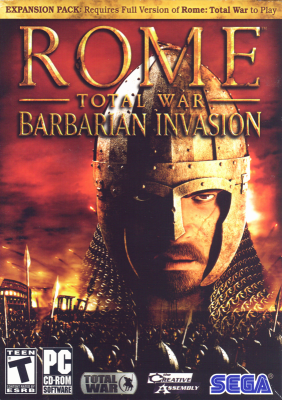 “The decline and fall of Rome was a slow and agonizing process, marked by internal strife, foreign invasions, and the erosion of moral values.” – Edward Gibbon
“The decline and fall of Rome was a slow and agonizing process, marked by internal strife, foreign invasions, and the erosion of moral values.” – Edward Gibbon
By Patrick S. Baker
Rome: Total War – Barbarian Invasion (Barbarian) is the first expansion pack for the critically acclaimed strategy game, Rome: Total War. Released just a year and five days after the release of the Rome: Total War, critics and players have a split opinion about expansion pack.
Some critics felt there was barely enough new material to justify an expansion pack. Others felt that Barbarian could have been released as an entirely new game.
The Imperial Campaign in Rome: Total War starts in 270 BC, when the Roman Republic completed the conquest of Italy and ends in 14 AD, with the death of Augustus. The campaign in Barbarian starts in 363 AD, with the death of the Emperor Julian, concluding the efforts to restore paganism in the Empire and ends in 476 AD with the fall of the Western Roman Empire.
This sets the expansion pact during the decline of the Roman Empire, a period marked by momentous turmoil and transformation. For example, the Roman Empire was permanently divided into the Eastern and Western Empires in 395 AD. This division reflects the historical reality of the time, as the once-mighty empire struggled to maintain its vast territories against internal strife and external threats.
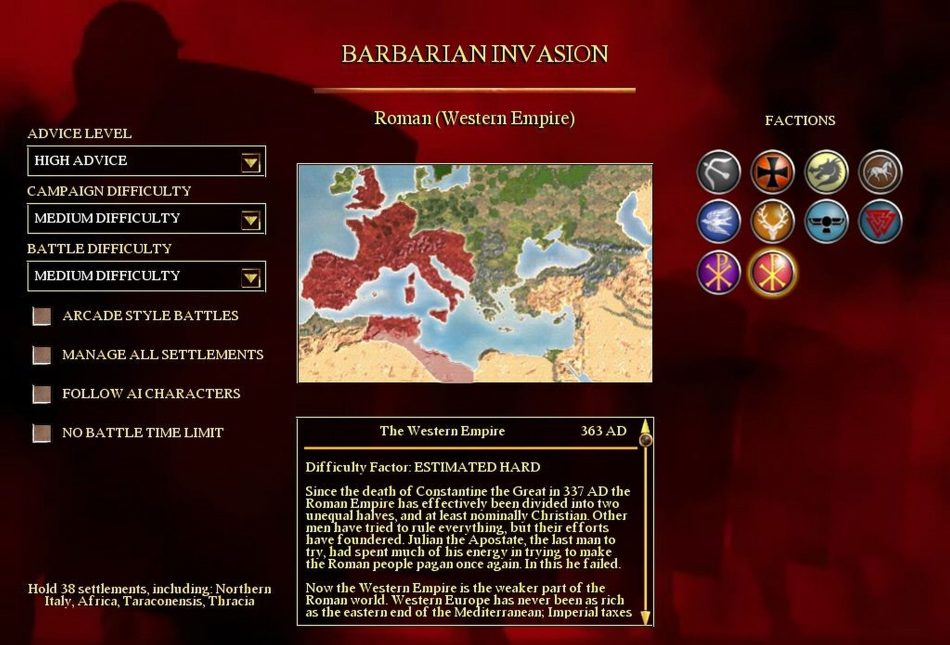
Barbarian introduces many new game play mechanics and features that distinguish it from the original game. One of the most notable additions is the concept of “Hordes”. When certain factions lose their last province, they become “Hordes”, representing entire nations on the move. These “Hordes” are massive armies that require no upkeep and can either sack cities for money or settle in new territories.
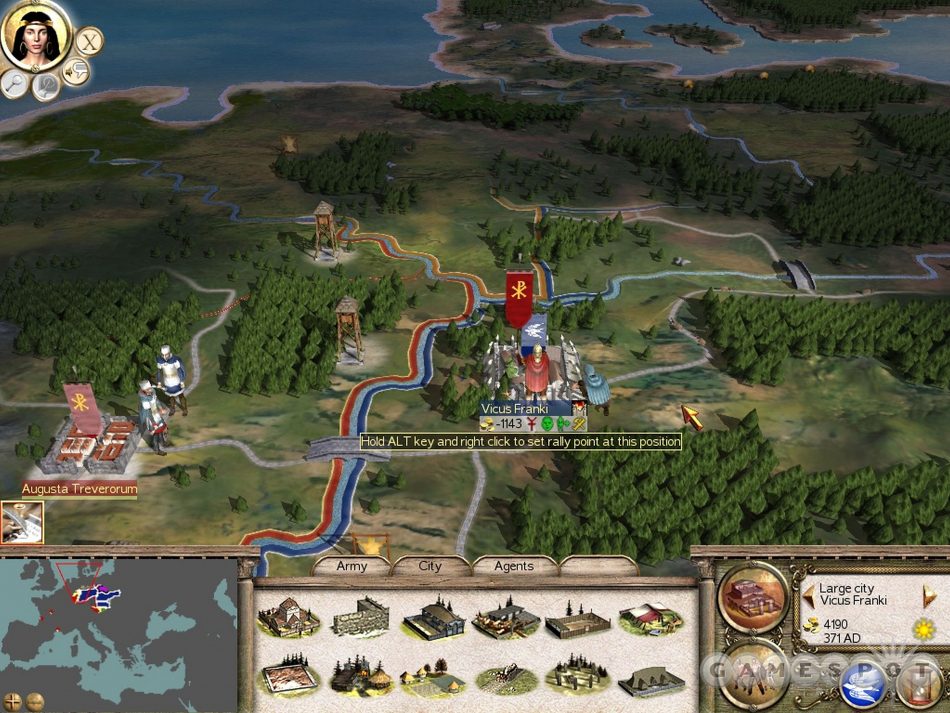
The expansion pack also introduces new factions, including the Huns, Goths, Vandals, Franks, Saxons, Sassanids, Alemanni and, Roxolani. Plus, the Roman Empire is split into the Eastern Roman Empire and Western Roman Empire as playable factions. Each faction comes with its unique units, strengths, and challenges. For example, the Huns are known for their powerful cavalry, while the Saxons excel in infantry combat.
Players can choose to play as either the Eastern or Western Roman Empire or one of the non-Roman factions, each offering a different game play experience. Barbarian adds layers of strategic complexity to the game with these factions. For example, the victory conditions are faction-specific. They can require controlling certain territories, or eliminating other specific factions.
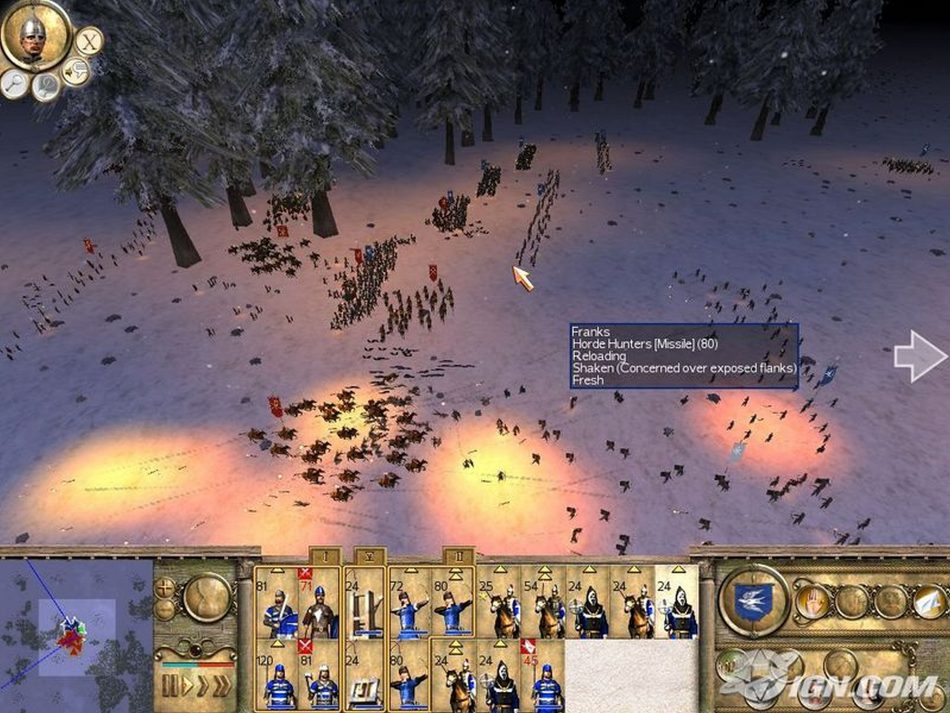
The game also replicates the religious tension of the time, with Christianity, Zoroastrianism, and Paganism all vying for dominance. This religious aspect adds another layer to the player’s strategic considerations as they must also manage the religious composition of their territories and navigate the challenges posed by religious conflicts. For example, building a Christian church in a Pagan town causes public order to decline.
Barbarian received generally favorable reviews from critics and players alike on Metacritic, with an 82% critic score and 8.4 users’ score.
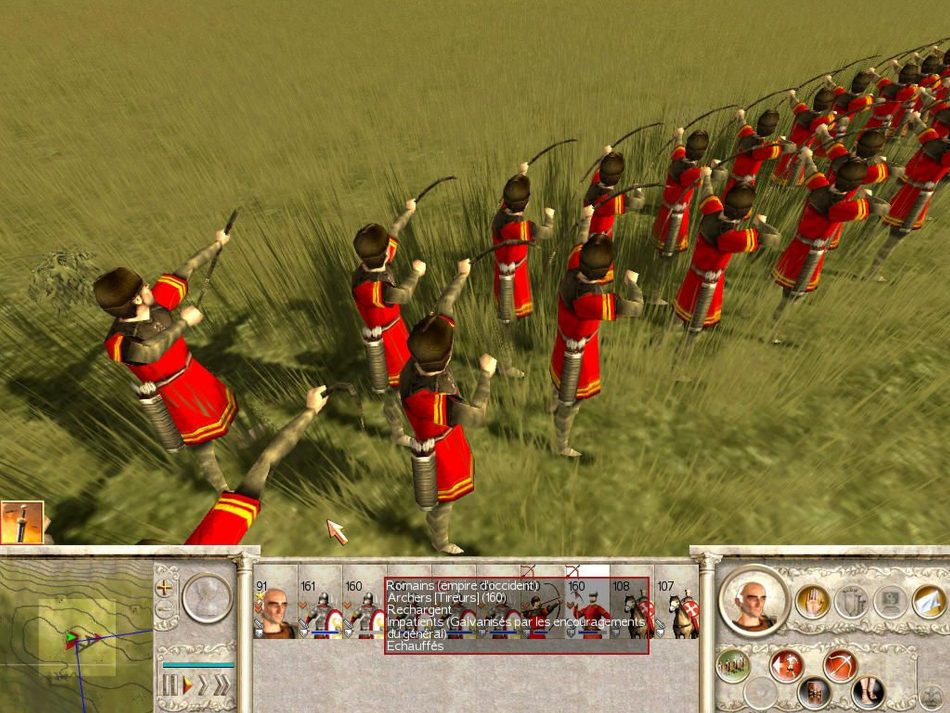
The IGN’s review highlighted the game’s “excellent use of the period’s historical context” and noted that it provided a “fresh and exciting challenge” for fans of the series. GameSpot echoed these sentiments, commending the expansion for its “richly detailed campaign” and praising the “tougher strategic decisions” it demanded of players. Further, several of the reviews praised the expansion’s new features, especially the introduction of “Hordes” and of conflicting religions. Both new features added depth and replayability to the game.
However, not all reviews were glowing. Some critics pointed out that the expansion’s focus on the late Roman Empire could have had a limit appeal, as the era was rather bleak and hopeless. Others also felt that the AI could have been improved, particularly in handling the complexities of the “Horde” mechanics.
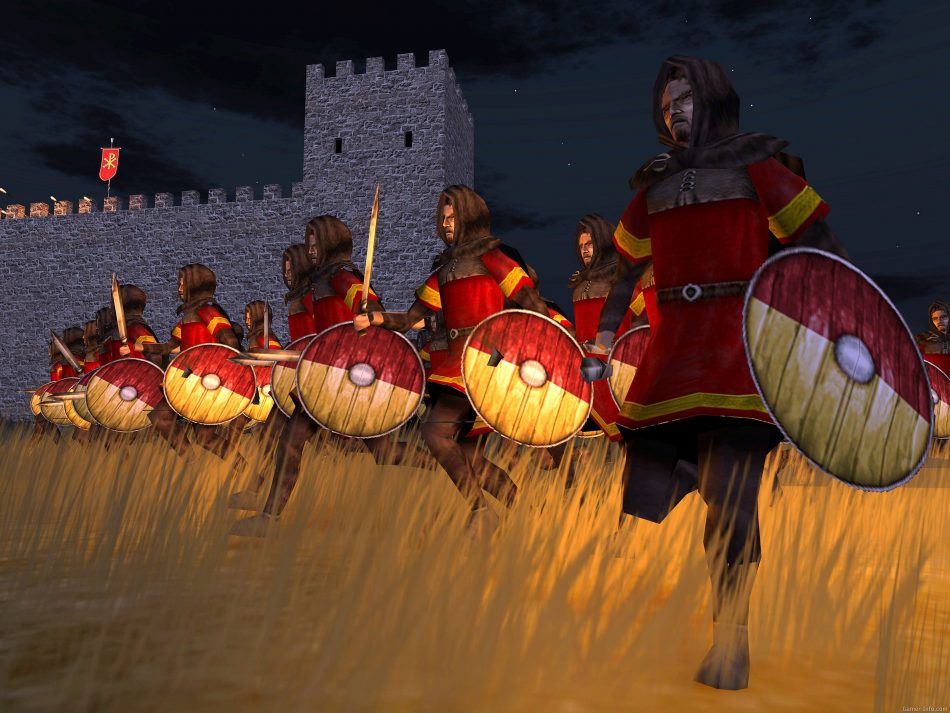 Critics also noted that Barbarian presented a greater challenge to players compared to the original game regardless of the faction the player controlled. All the factions faced many difficulties from the very start of the game. This made winning the game outright very difficult.
Critics also noted that Barbarian presented a greater challenge to players compared to the original game regardless of the faction the player controlled. All the factions faced many difficulties from the very start of the game. This made winning the game outright very difficult.
In terms of sales, Barbarian performed well, though it did not reach the level of the original Rome. By the end of 2005, Rome and Barbarian had sold over 2.3 million copies combined, with the expansion pack contributing significantly to this figure.
Rome: Total War – Barbarian Invasion builds on the strengths of the original game introduces several new features. The game also presents a much more challenging gameplaying experience as well. Further, Barbarian is considered a significant addition to the Total War series. Its influence can be seen in later games, such as Total War: Attila, which also focuses on the decline of the Roman Empire and features similar game play mechanics. The expansion’s emphasis on strategic complexity, historical accuracy, and challenging gameplay has made it a favorite among fans of the series.
Sources:
CNET (1 Nov. 2005) Rome: Total War Barbarian Invasion review
GameIndustry.biz. (28 Feb. 2006) “SEGA Reports Strong Sales for Total War Franchise.”
Gamesradar (14 April 2006) “Rome: Total War – Barbarian Invasion review”
GameSpot, (3 Oct. 2005) “Rome: Total War – Barbarian Invasion Review.”.
GameSpy. (4 Oct. 2005) “Rome: Total War – Barbarian Invasion.”
IGN (30 Sept. 2005) “Rome: Total War – Barbarian Invasion Review.”
Metacritic.com “Rome: Total War Barbarian Invasion.”
Strategyfrontgaming.com (8 Jan. 2021) Rome Total War: Barbarian Invasion – Retrospective
Total War Wiki Rome: Total War: Barbarian Invasion
YouTube.com (10 Mar. 2019) Rome: Total War – Barbarian Invasion – The Last Days of Rome
